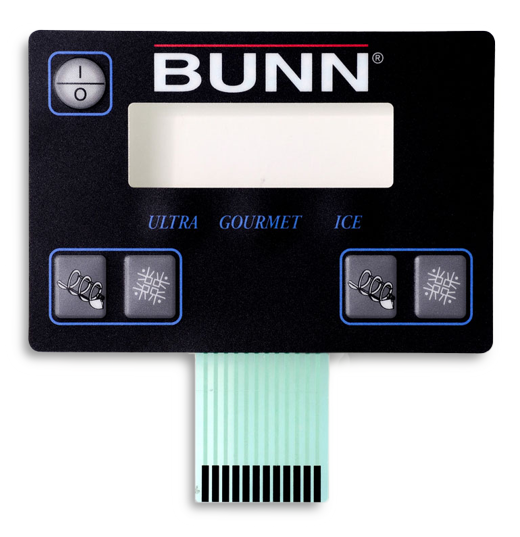How Membrane Switches Enable Lightweight and Resilient User Interface Solutions
How Membrane Switches Enable Lightweight and Resilient User Interface Solutions
Blog Article
The Ultimate Source on Membrane Switches Over: Layout, Performance, and Applications
Membrane switches offer as an appealing junction of design and performance, playing an essential role in contemporary interface across numerous markets. This resource unboxes the crucial parts that add to their efficiency, including graphic overlays and circuit traces, while likewise elucidating the devices behind their stress activation. As we discover the varied applications of membrane buttons, it becomes evident that their versatility and resilience are vital in atmospheres varying from medical care to consumer electronic devices. The subtleties of their layout and operational concepts might disclose also deeper understandings worth thinking about.

Comprehending Membrane Layer Switches
Membrane switches are a sort of individual interface technology extensively utilized in different digital tools, identified by their thin, flexible design and capability. These buttons consist of numerous layers that consist of graphic overlays, glue layers, and circuitry, enabling a effective and small interface for individuals. They can be discovered in home appliances, medical devices, and commercial control panels, offering a reputable method for individual interaction.
One of the primary advantages of membrane layer switches is their capability to withstand pollutants such as dust and wetness, making them ideal for environments where sturdiness is important. Their low-profile layout enables seamless integration right into various applications, while the adjustable visuals overlays boost user experience by giving clear visual feedback. Additionally, membrane switches can suit a range of innovations, such as responsive comments and backlighting, additional enhancing their functionality.
The manufacturing process for membrane layer changes generally involves screen die-cutting, lamination, and printing strategies, making sure accuracy and uniformity in manufacturing. In general, membrane layer switches over represent a flexible and reliable remedy for modern electronic tools, incorporating performance with aesthetic appeal in individual interface style.
Secret Parts and Design Elements
A range of vital elements and design components come together to produce an effective membrane layer switch. At the core, the visuals overlay offers both functional and visual objectives, offering an easy to use user interface while shielding inner parts from environmental variables. The choice of materials, generally polyester or polycarbonate, affects durability and responsive responses.
Under the overlay, the adhesive layer makes sure the switch adheres securely to the substratum, which can be metal, plastic, or glass. The spacer layer is important, as it preserves the required space between the circuit and the overlay layers, enabling reliable actuation. Membrane Switches. Circuit traces, normally made from conductive ink or adhesive, are published on a flexible substratum, allowing electric signals to be transferred when stress is used
Design considerations likewise include the setup of tactile domes or embossing that give physical feedback to the individual, improving the overall experience. Furthermore, the format and spacing of the switches have to be maximized for simplicity of use, guaranteeing that users can navigate the user interface intuitively. Generally, these components and design elements function synergistically to create a reliable, useful membrane layer switch customized to certain applications.
Performance and Operation System
At the heart of efficient performance for membrane layer switches over exists their operational system, which helps with user interaction through a basic yet efficient style. These switches operate on the concept of stress activation, where a customer uses force to a marked location of the switch (Membrane Switches). This action presses the layers of the button, finishing an electric circuit that sends out a signal to the linked tool
The building and construction typically consists of a top graphic layer, an adhesive spacer layer, and a bottom circuit layer, which collectively develop a robust user interface. When stress is applied, the leading layer breaks down versus the lower circuit layer, enabling conductive traces to attach. This design not only allows clear responsive comments however additionally ensures resilience and dependability, as the switches are commonly immune to dust and moisture.
Furthermore, the versatility click reference of membrane layer changes permits assimilation with numerous technologies, including LED signs and microcontrollers, boosting their capability. By offering a streamlined user interface that lessens mechanical wear, membrane layer switches over stay a popular selection in applications varying from customer electronic devices to industrial tools, making certain optimal performance and individual satisfaction throughout diverse settings.
Kinds of Membrane Buttons

An additional substantial classification is brightened membrane switches, which incorporate backlighting to boost presence in low-light problems. These buttons are usually made use of in control panels and control panels where clear visibility is necessary.
Additionally, there are personalized membrane changes designed to fulfill certain dimensional, graphical, and practical demands. These customizations can consist of distinct forms, shades, and designs, allowing for smooth combination into different devices.

Applications Throughout Various Industries
Just how do membrane buttons enhance functionality across varied sectors? In the medical field, membrane switches play an essential role in gadgets such as analysis devices and patient surveillance systems, where dependability and convenience of cleansing are extremely important.
In the auto industry, membrane switches are typically utilized in dashboards and control board, offering user-friendly controls that official statement improve vehicle driver security and convenience. check out this site The consumer electronics market likewise gains from their light-weight and customizable functions, making it possible for sleek styles for smart devices and home appliances.
Moreover, membrane layer buttons locate applications in industrial automation, where they contribute to efficient machinery procedure and tracking systems. Their resistance to dirt and moisture makes certain functionality in requiring conditions (Membrane Switches). Furthermore, the food and beverage sector uses membrane layer switches for equipment control, where health and longevity are essential
Verdict
Finally, membrane layer switches stand for a vital technology in interface technology, characterized by their unique layout and performance. Their crucial components, including graphic overlays and circuit traces, add to their operational effectiveness via pressure activation. The flexibility of membrane layer switches promotes their application throughout varied industries, from medical gadgets to customer electronic devices. This extensive understanding enhances the value of membrane buttons in improving product functionality and resilience in modern-day technical environments.
Membrane layer switches serve as a fascinating junction of layout and functionality, playing a crucial function in contemporary user interfaces across various markets.Membrane layer switches are a kind of customer interface modern technology extensively made use of in different electronic devices, defined by their thin, flexible design and functionality.At the heart of effective capability for membrane layer switches over lies their operational device, which helps with user communication through a simple yet effective layout. These buttons run on the concept of pressure activation, where an individual uses force to a marked area of the button.In verdict, membrane layer switches stand for an important development in customer interface innovation, defined by their one-of-a-kind design and capability.
Report this page